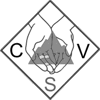This page describes who is recognised as a Traditional Owner in Victoria today and their rights and responsibilities for land title and cultural heritage.
Representation
“Traditional Owners are Aboriginal People with particular knowledge about traditions, observances, customs or beliefs associated with an area; and have responsibility under Aboriginal tradition for significant Aboriginal places located in, or objects originating from, this area.” Victorian Aboriginal Heritage Council
Traditional Owners in Victoria are currently represented by 11 Registered Aboriginal Parties covering approximately 75% of Victoria. The following link provides a map that shows the boundaries for these RAPs. https://achris.vic.gov.au/weave/wca.html
The Aboriginal Heritage Act 2006 (Victoria) created the Victorian Aboriginal Heritage Council, an independent statutory body that appoints Registered Aboriginal Parties (RAPs) to manage and protect Cultural Heritage on their country. In order to be appointed, RAPs must demonstrate their relationship to country, the inclusivity of their membership and links to Apical (Common) Ancestors. Once appointed, their knowledge, lore, cultural responsibilities and authority has been proven and their registration confirms their inherited role to speak for Country and Culture within their registration area.
Their core statutory functions relate to evaluation, assessment and decision making on Cultural Heritage Plans, Applications and Agreements. For more information on the VAHC and RAPs, visit: https://www.aboriginalheritagecouncil.vic.gov.au
These corporations also undertake broader programs or work that relate to the aspirations of the Peoples they represent and their plans to care for their Country. These programs are often documented as Country Plans provided on their websites and cover a wide range of issues that apply to their particular history, culture, community and country.
Land Title and Agreements
The appointment of RAPs to areas in Victoria, as described above, defines the responsibility for the protection of Cultural Heritage in those areas but does not assign rights to land or title.
There are two mechanisms by which Traditional Owners in Victoria can apply to have native title recognised:
- The Native Title Act 1993 (Commonwealth)
- Traditional Owners Land Settlement Act 2010 (Victoria)
Both processes lead to similar outcomes in terms of rights over public land and agreements on how that land is to be used and managed.
Victoria currently has agreements of this nature with seven Traditional Owner groups.
Native Title
The Native Title Act (NTA) stemmed from the Mabo Case in the High Court of Australia in 1992. It is the recognition, in Australian Law, that Aboriginal and Torres strait Islander peoples had a system of law and ownership of their lands before European settlement.
Native Title may be recognised in places where Aboriginal and Torres Strait Islander people continue to follow their traditional laws and customs and have maintained a link with their traditional country. In these cases it recognises title as a pre-existing right, not a grant or right that is created by the Australian government.
Native title applies to public land and waters (eg vacant crown land, national parks, state forests, reserves, foreshores and waters)
Native title is determined by the Federal Court of Australia, or by the High Court on appeal, once an application is made by Traditional Owners.
Traditional Owner Settlements
Responding to some the difficulties and drawbacks of the NTA, the Victorian Government worked with the Victorian Traditional Owners Land Justice Group to jointly develop the Traditional Owner Settlement Act 2010 (TOS). This allows for an out-of-court settlement of native title between Victorian traditional owners and the state to recognise traditional owners’ relationship to land, provide them with certain rights on Crown land and resolve issues that would be otherwise dealt with through native title claims.
The key parts of a settlement include:
- A Recognition and Settlement Agreement (RSA) – recognises a TO group and their rights over certain public land
- A Land Agreement – provides for land transfers and grants of title to parks and reserves
- A Land Use Activity Agreement (LUAA) – procedures for future use of public land
- A Natural Resource Agreement – enables access and use of natural resources and participation in natural resource management
- A Funding Agreement – regarding payments for economic development and other purposes
- An Indigenous Land Use Agreement – binds all native title holders and validates future acts – registerd under the NTA
- A Traditional Owner Land Management Agreement – facilitates joint management of certain parks and reserves.


